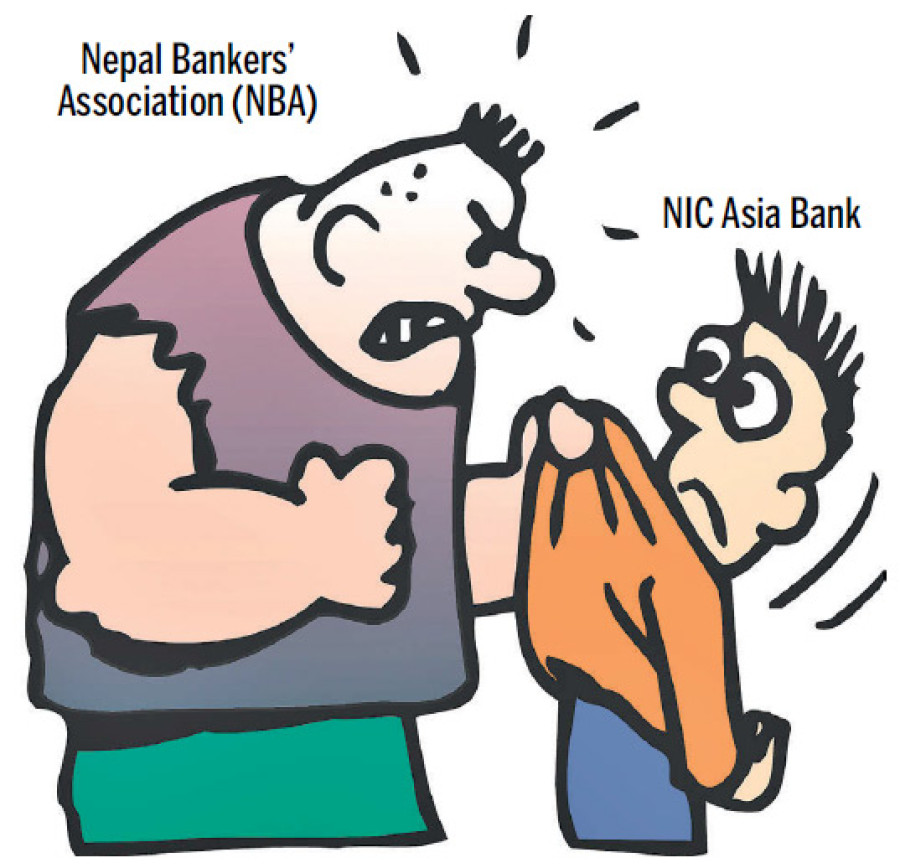Money
NBA manages to bring NIC Asia to its knees
The lone bank that stood against the decision of the Nepal Bankers’ Association (NBA) to regulate deposit rates has been brought to its knees, setting a bad precedent in the banking sector, which until now was following principles of market economy.
The lone bank that stood against the decision of the Nepal Bankers’ Association (NBA) to regulate deposit rates has been brought to its knees, setting a bad precedent in the banking sector, which until now was following principles of market economy.
NIC Asia Bank was the only bank to oppose NBA’s instruction to limit fixed deposit rate at 11 percent and savings deposit rate at 8 percent. It is currently offering returns of up to 12 percent on fixed deposit and up to 10 percent on savings deposit.
Following the upward revision in deposit rates, the NBA, the umbrella body of 28 commercial banks, had barred remaining 27 banks from conducting any interbank transaction, including foreign exchange transaction, with NIC Asia.
Although all banks in Nepal are free to fix deposit rates, NIC Asia had to face the wrath of the NBA for following the principles of market economy. This practice of imposing decisions, according to many, has turned the NBA into a cartel.
Fearing further backlash, NIC Asia has now agreed to offer returns within the threshold created by the NBA.
“It is a general perception that differences between the bank and the NBA should be settled for the benefit of the entire economy. We are making sincere efforts towards this end as an accountable and responsible institution,” says a statement issued by the bank on Tuesday. “In this regard, we have decided to offer 10-percent interest on one of the savings deposit products and 12-percent interest on one-year fixed deposit until Friday.”
Following the NBA’s success in regulating deposit rates, the private sector has started demanding for stability in lending rates as well.
“Commercial banks should now bring down interest rates on loans as well, as higher lending rates are hitting the private sector hard,” said Pashupati Murarka, former president of the Federation of Nepalese Chambers of Commerce and Industry, the largest private sector umbrella body, adding, “If the private sector fails to survive, commercial banks will not survive either.”
His comments come at a time when commercial banks have been blamed of raising lending rates haphazardly. Many borrowers say banks just send a text message to inform that the credit rate has been revised upwards, which puts many in a tight corner.
The NBA has repeatedly said it had created a threshold on deposit rates to prevent lending rates from flying through the roof.
High lending rates not only dampen private sector sentiment but stoke inflation as well. But many banks do not show interest in keeping lending rates within the threshold created by the central bank.
Currently, commercial banks are allowed to add up to 5 percentage points to deposit rates to fix lending rates. This means money bought in the form of deposit at, say, 10 percent interest, can be sold to borrowers in the form of loans at an interest of up to 15 percent. This is referred to as the interest spread.
The average interest spread stood at 5.6 percent in mid-January, according to the latest data of the Nepal Rastra Bank, the central bank.
This is beyond the 5-percent interest spread threshold created by the central bank. All this while, the private sector has been demanding that the central bank reduce the interest spread. But the regulator is tight-lipped about this issue.




 17.12°C Kathmandu
17.12°C Kathmandu














